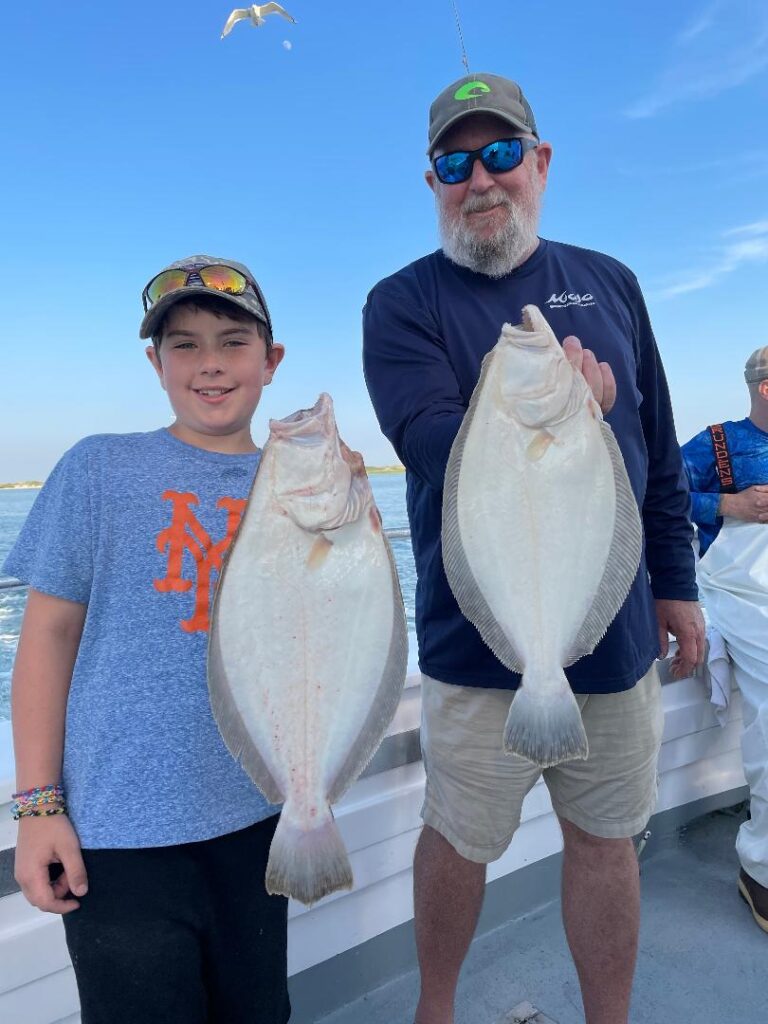With the arrival of September, fishing across Long Island is about to pivot. Cooler nights, new species, and new regulations for sea bass create an abundance of opportunity for anglers.
Our most welcomed species for late summer and early fall is false albacore. They’re fast, they’re frustrating, and they’re a thrill to catch on fly rods and light tackle. Chasing rain bait on both the north and south shores, these speedsters give the rush of a tuna bite in a downsized and convenient size. You need to be patient, and hair trigger fast on the throttle or rod at the same time. These fish can pop up anywhere and everywhere throughout September and into October and some years even longer. The tell-tale sign is working birds feeding on the bait they push to the top of the water and wreak havoc on. The more you chase them the more you pick up on the etiquette of albie fishing. Like any blitzing fish, don’t run up too quick on a feed and push the fish down. Be aware of other boats chasing the same fish and do your best to be situationally aware while managing the beautiful sight of busting fish frothing.

A highly sought after and prized bite for fly fisherman, the thrill hits just as hard on light spinning gear. 20-pound braid with an Albright, uni to uni or fg knot to your leader will hold up fine. Deadly dicks, epoxy jigs, and soft plastics like albie snax are all great choices for those using spinning outfits. There’s no reason to commit to just one though as wind or timid fish will dictate what your go to for the trip is. Using a clip at the end of your leader will save time and frustration when needing to switch gears for a new color or weight choice. Intel is key in the albie game. Scouting near the mouths of inlets and waters just outside will pay off as they first start swimming locally. Just as fun, often we see bonito and Spanish mackerel making an appearance when albies show up and will go for the same fly, jig, and soft plastic offerings. In terms of harvesting, albies have pretty much no use other than as shark bait. Bonito if bled and iced immediately and bloodlines removed can be great table fare. Spanish Macks though are the real treat when the outer bands of dark meat is removed.
Black sea bass regulations ease up in September with the daily bag limit increasing to 6 from 3 per angler. The hefty 16.5-inch minimum size is still in effect. With lighter crowds as school starts and vacations end the reefs and wrecks don’t get as fished out as they typically do over the summer.
Fluke fishing continues to be strong in September. Bigger fish are on the chew in the ocean with some still lurking in the bays. The keeper to short ratio has been to anglers’ favor since August and should continue throughout the month. With snappers still around, they act as a perfect doormat bait drifted on the bottom on a long leader.
The tuna bite is still strong and thanks to the hot summer we had, they’re close. From 15 miles to the canyons, yellow fin, blue fin and big eyes are biting. The near shore spots in the 15-50 mile range will hold mostly blue fin and yellowfin and the added bonus of mahi. The jig bite has been red hot since July with the abundance of sand eels. The adage is true of fish being caught the night before. These are powerful fish that will exploit any shortcomings in your gear from reels to knots to jigs. A good rule of thumb is changing out your leaders after three fish and sooner if any chaffing at all. Being in the midst of hurricane season, be aware of conditions when heading out and what’s forecast for the duration of your trip. No fish is worth rolling the dice on that a smaller boat can handle rougher seas than it’s designed for. On the other hand, if it’s flat calm with plenty of solid reports no day at work is worth missing out on an epic day on the grounds.
The amount of bait from bunker to sand eels in our waters now is mind blowing. While it may be some weeks before we see a solid striper bite, they’ve made showings in mid to late September especially when sand eels are around. Bunker pods may not just have bass on them, but the water is still warm enough to continue the cobia bite that improves year over year from the NY Bite to Southampton.
Catch ‘em up!!!
